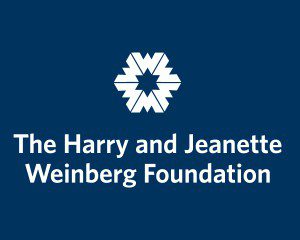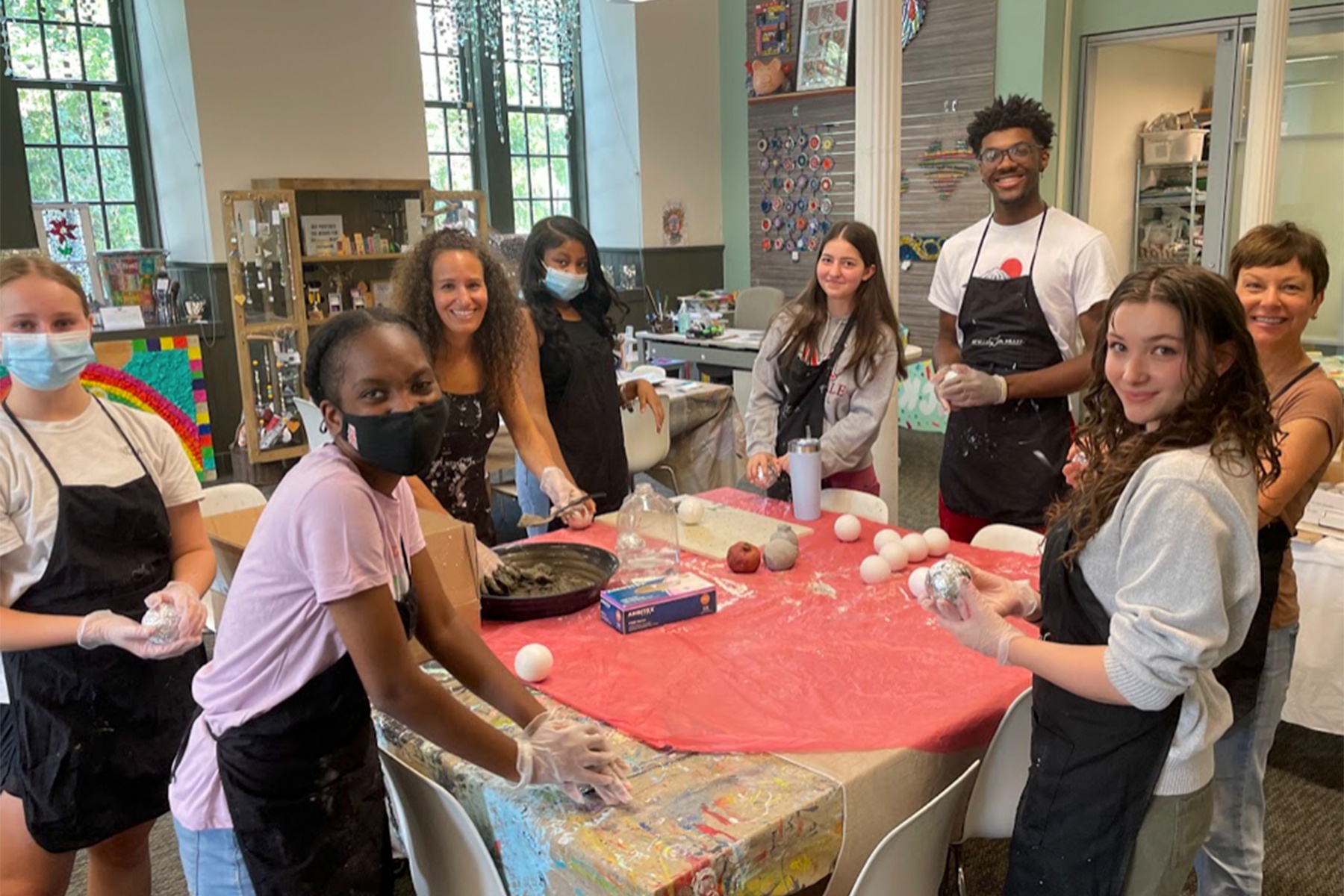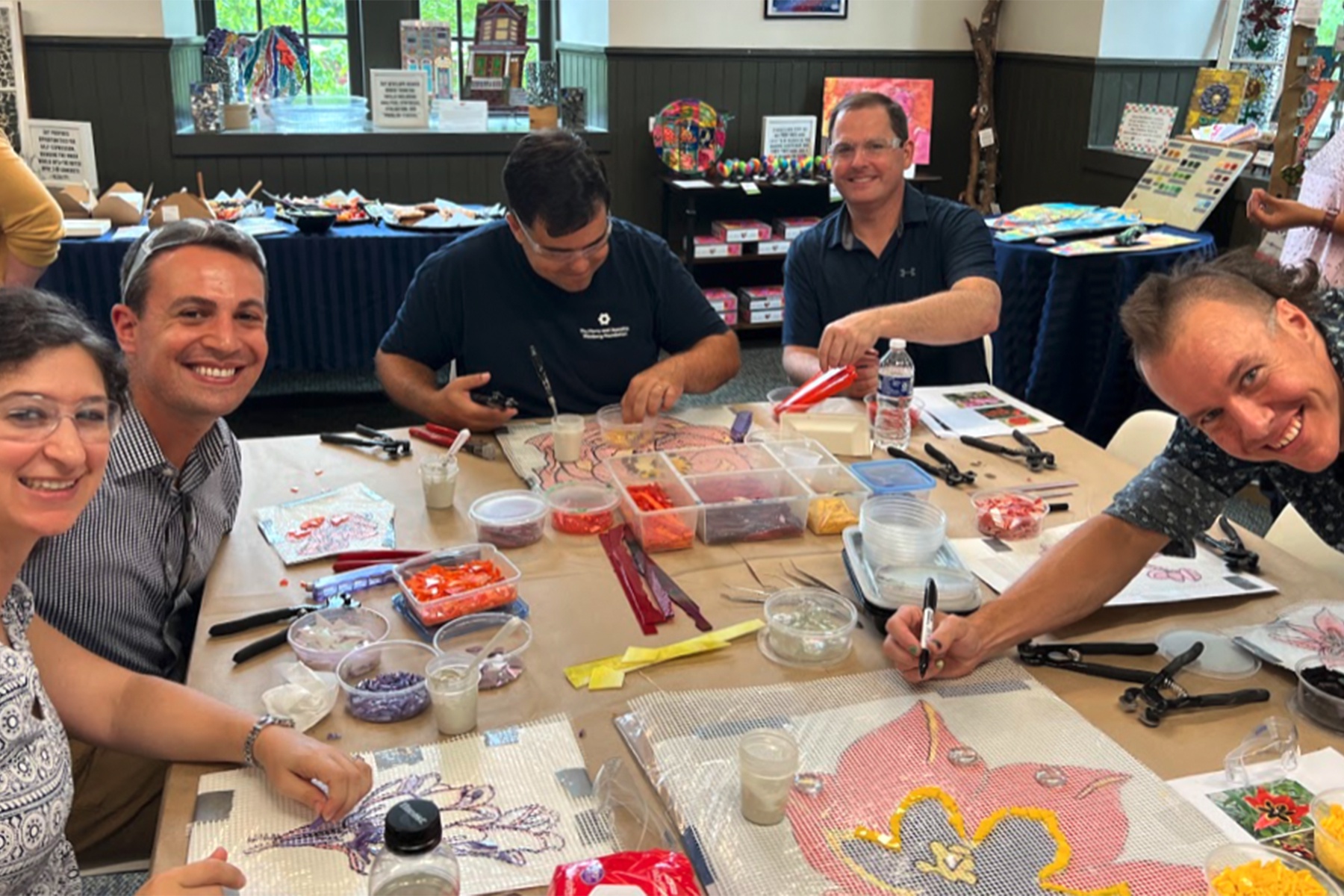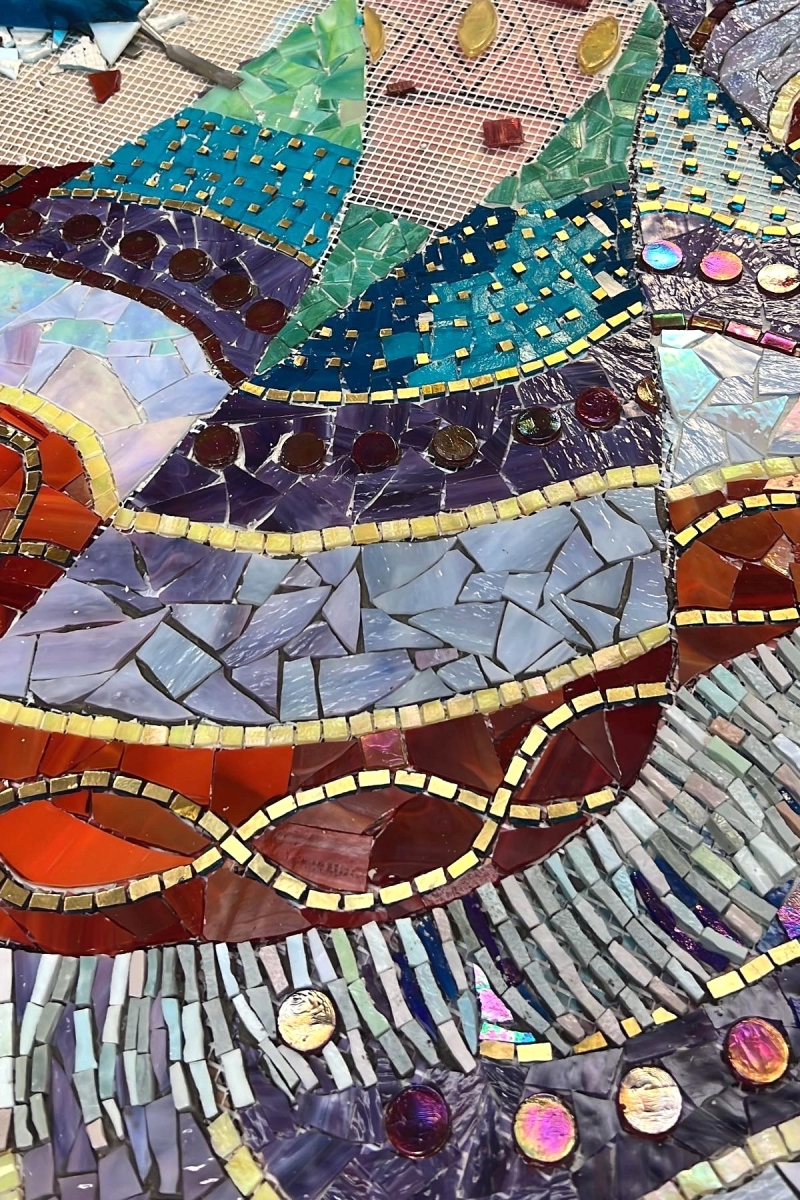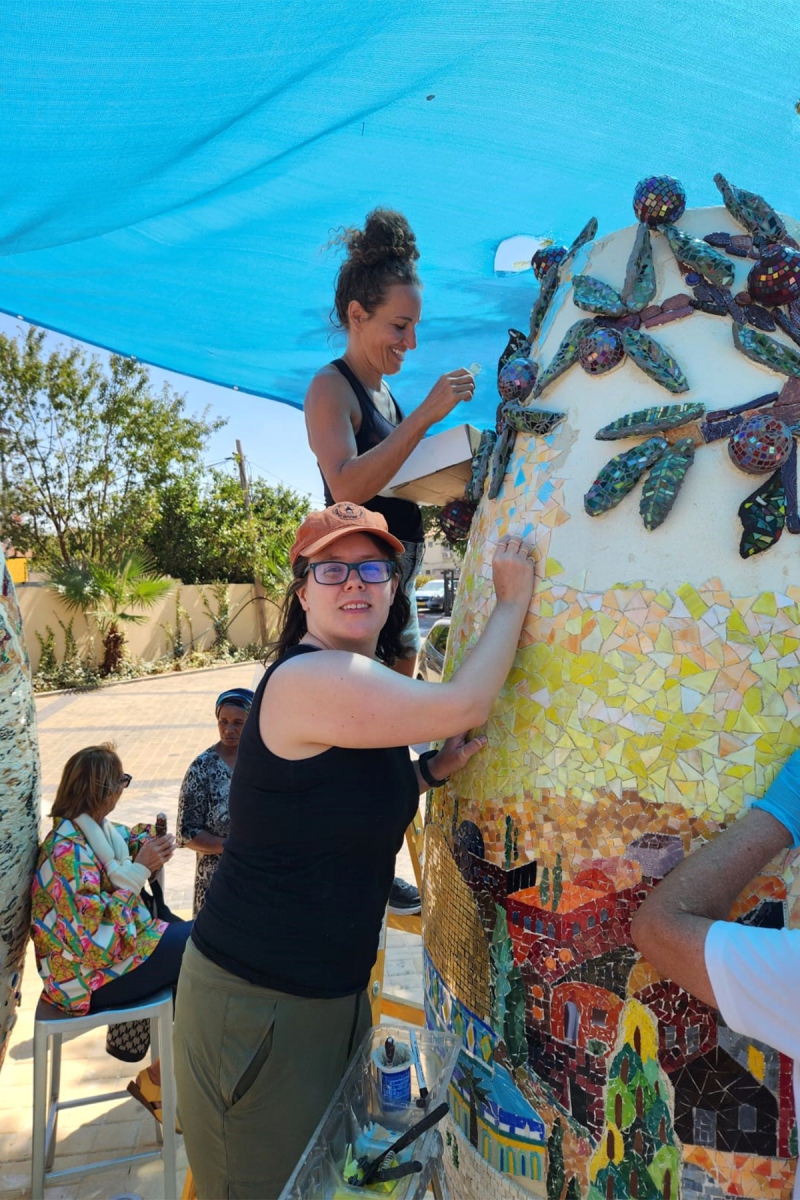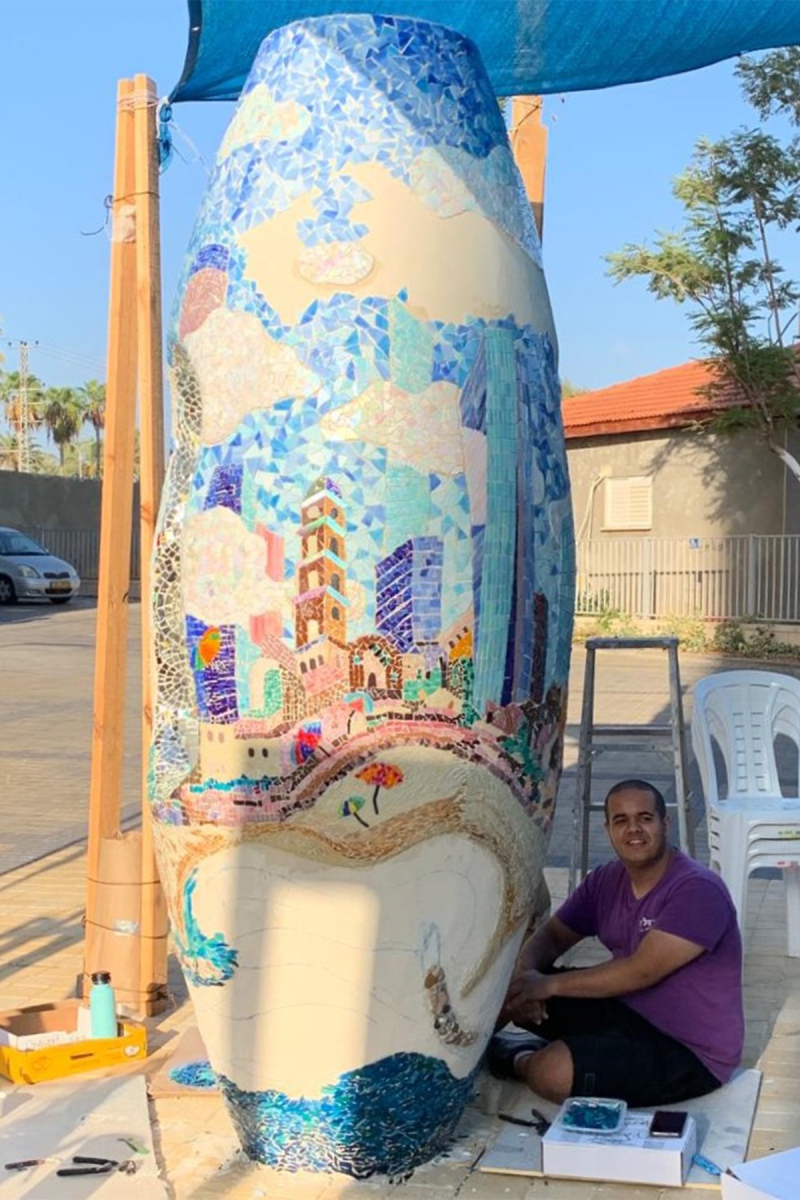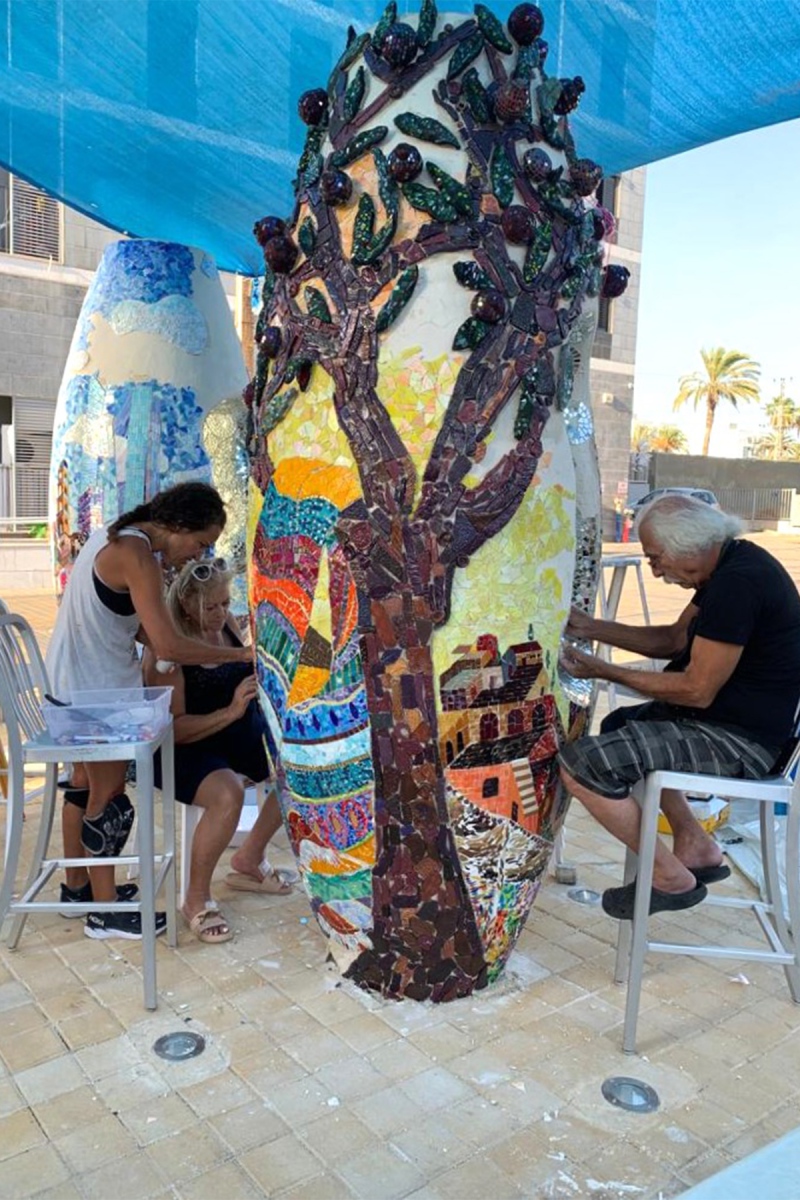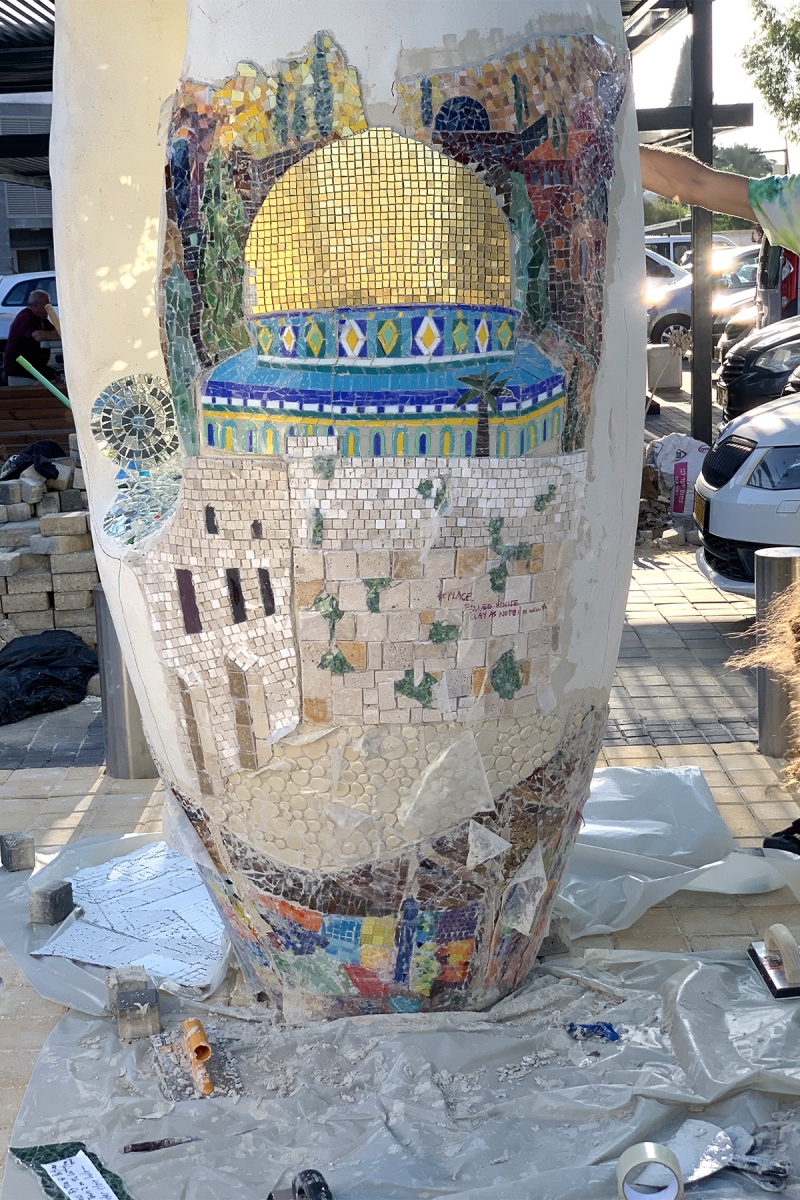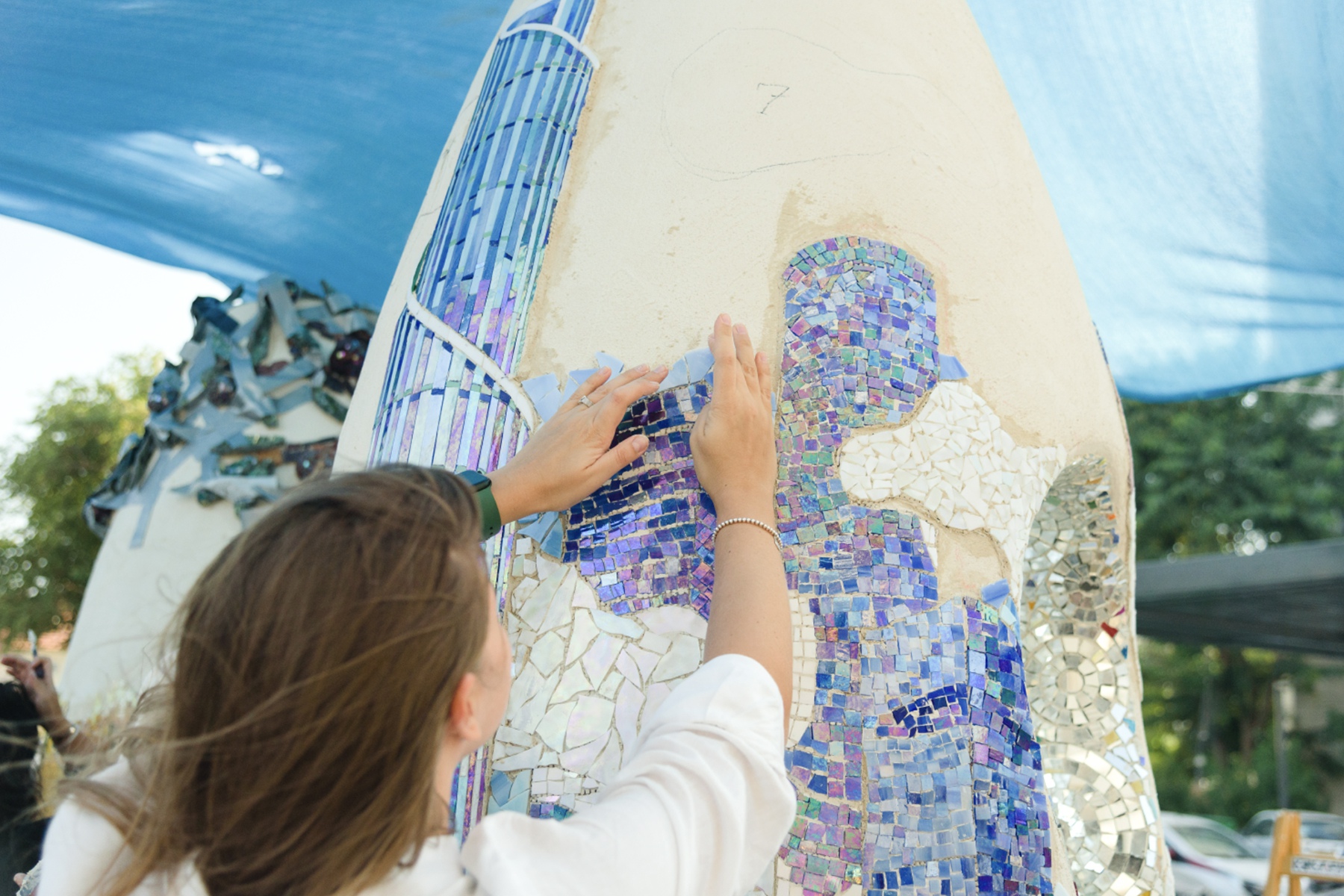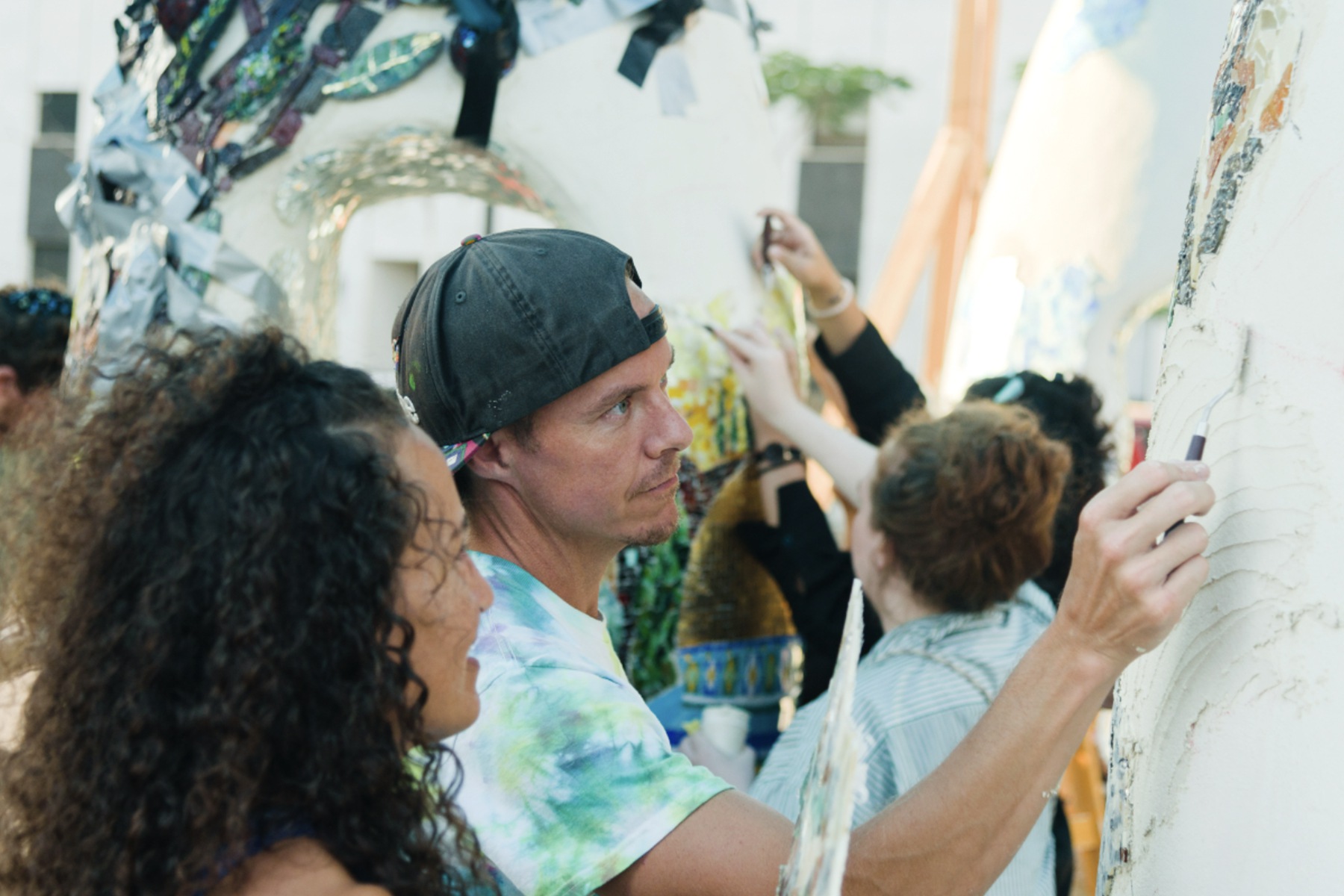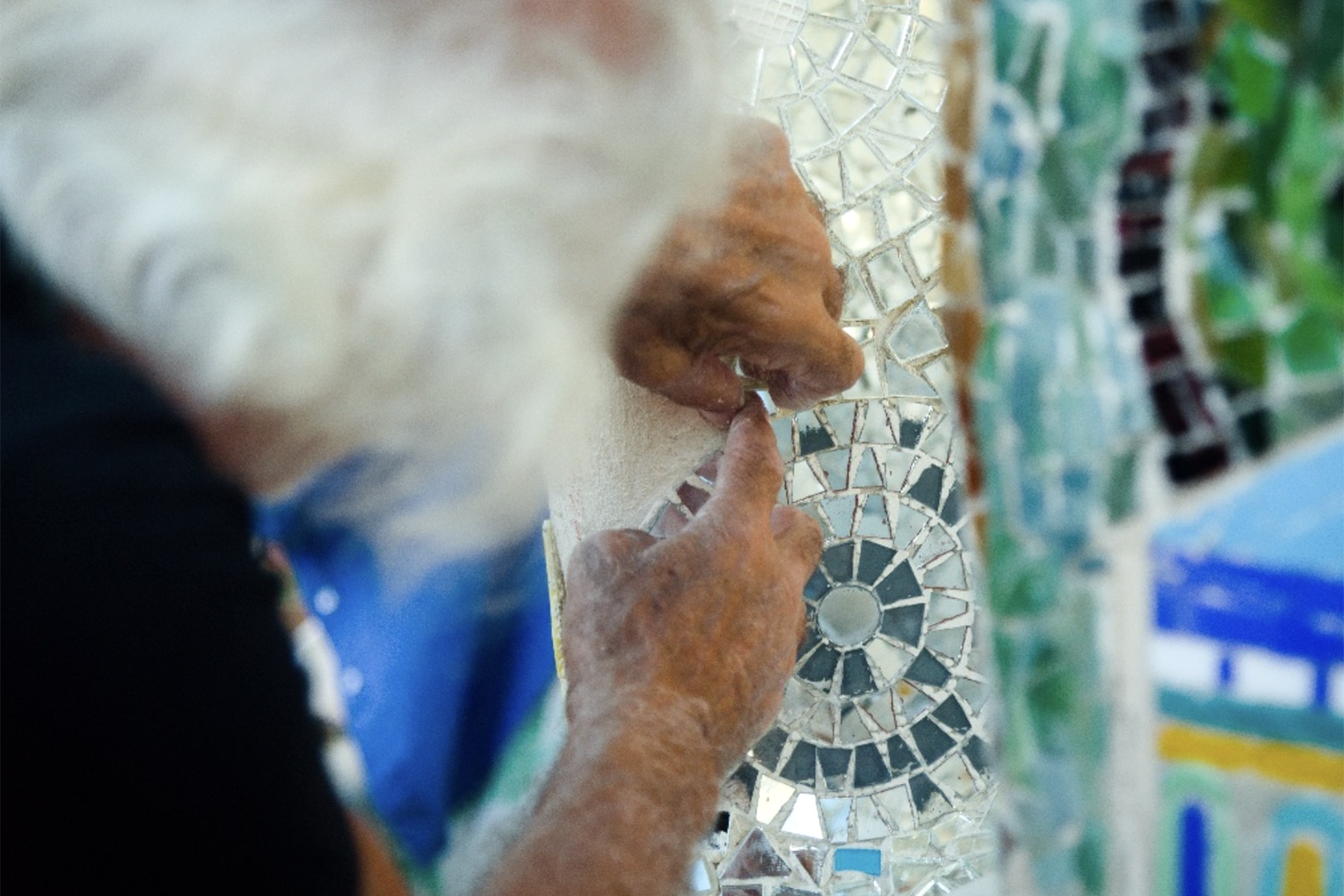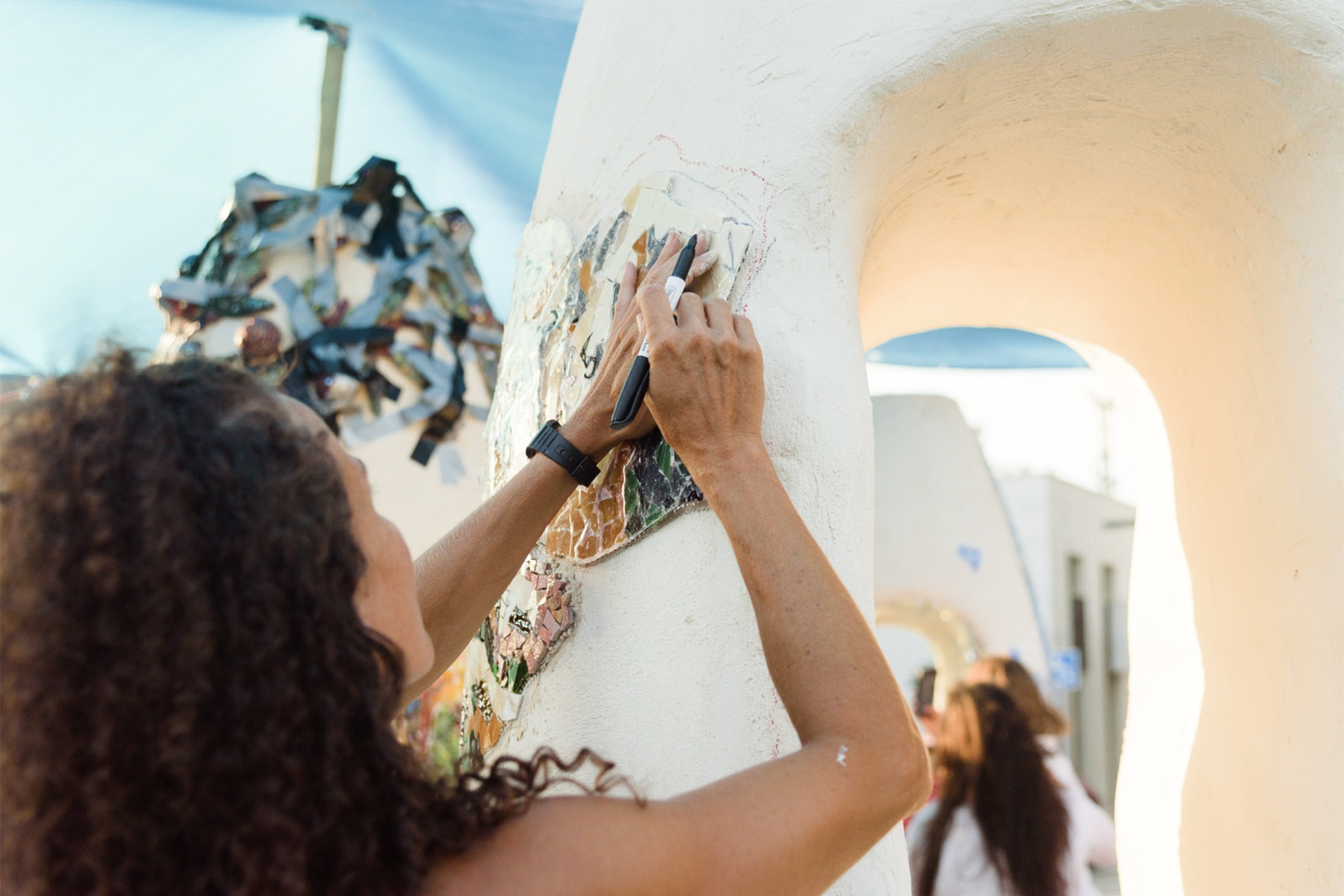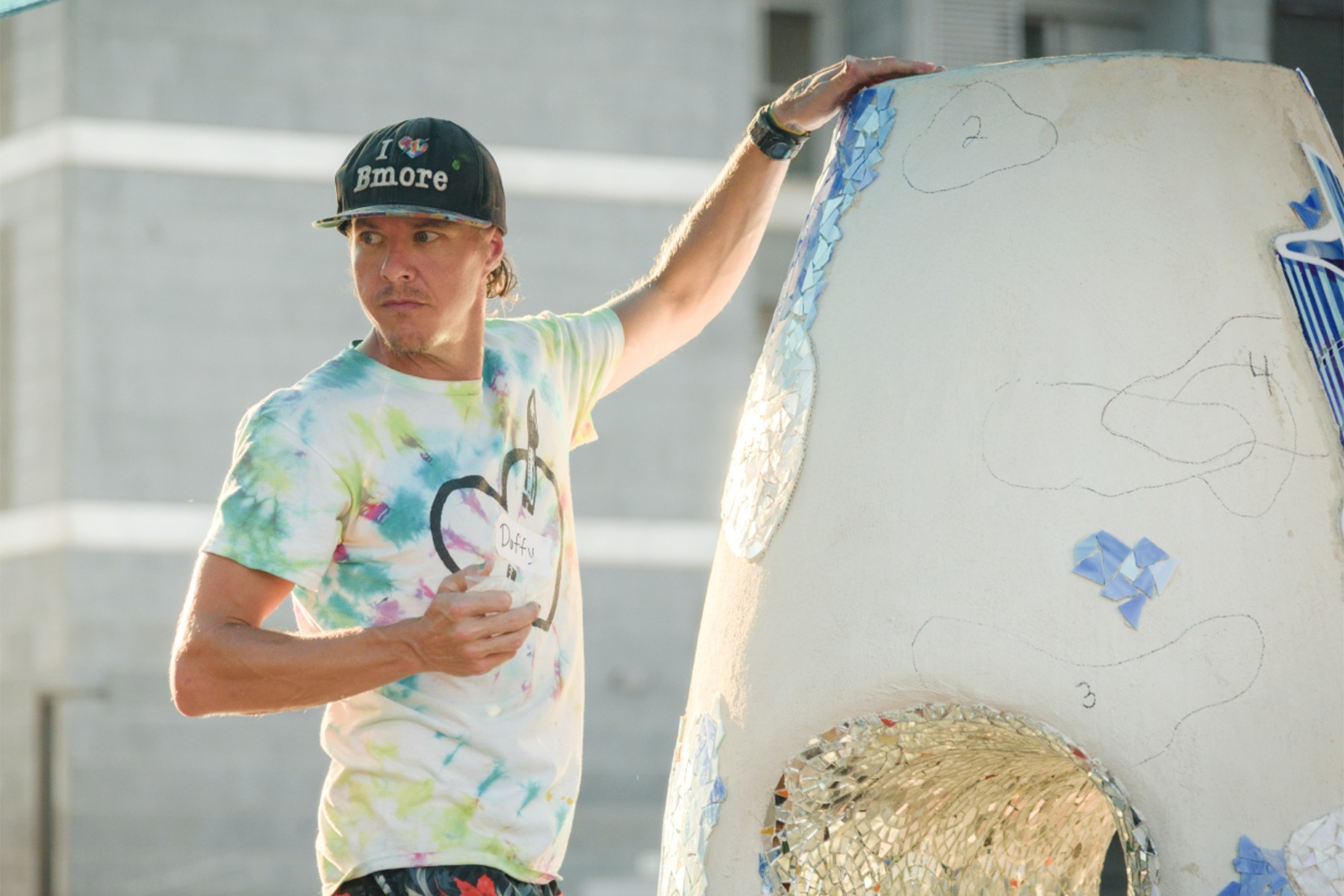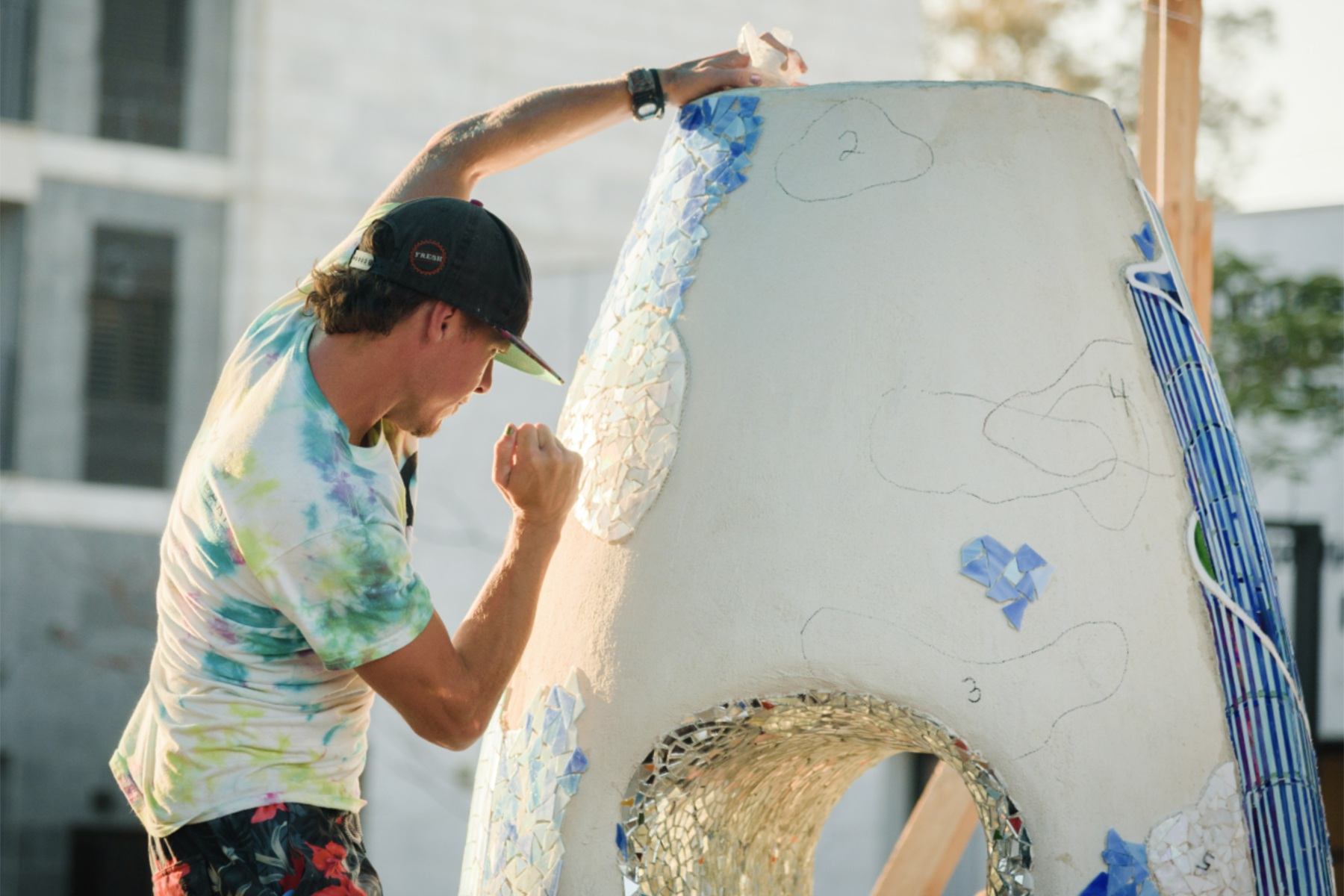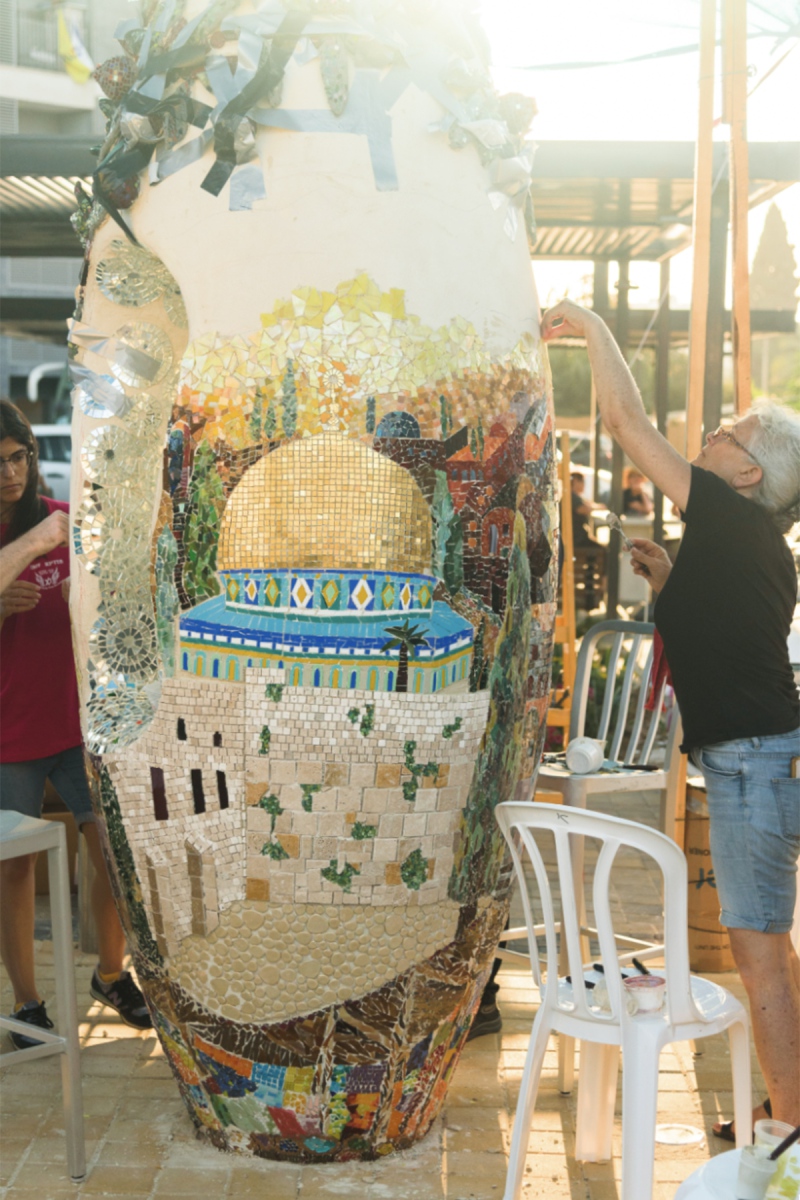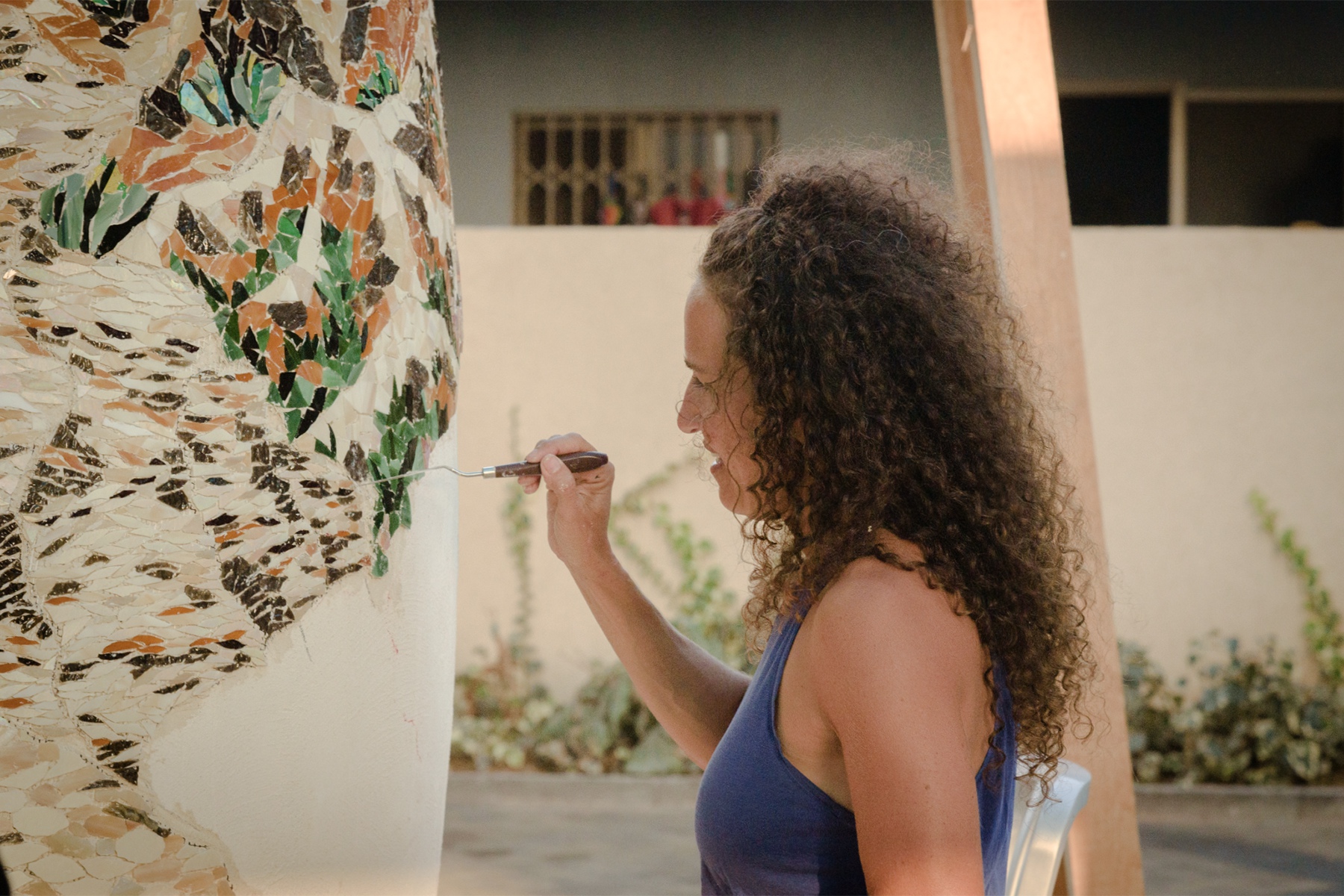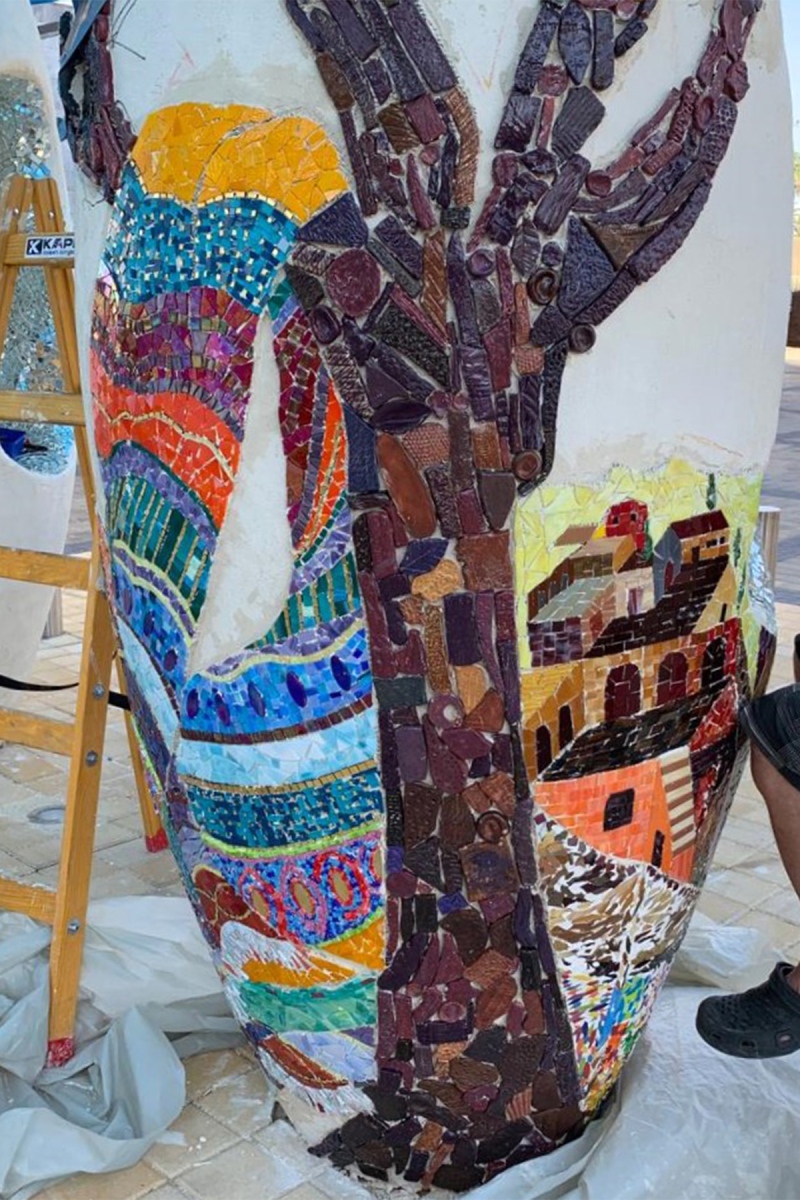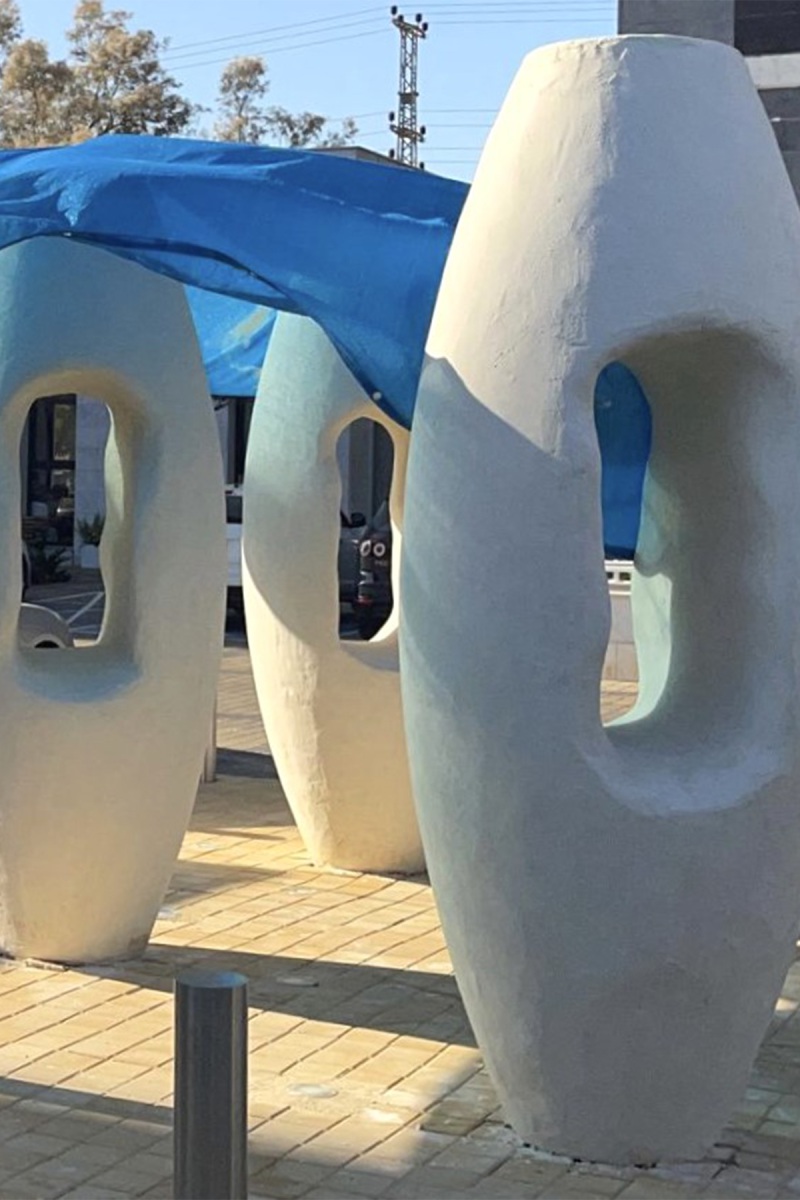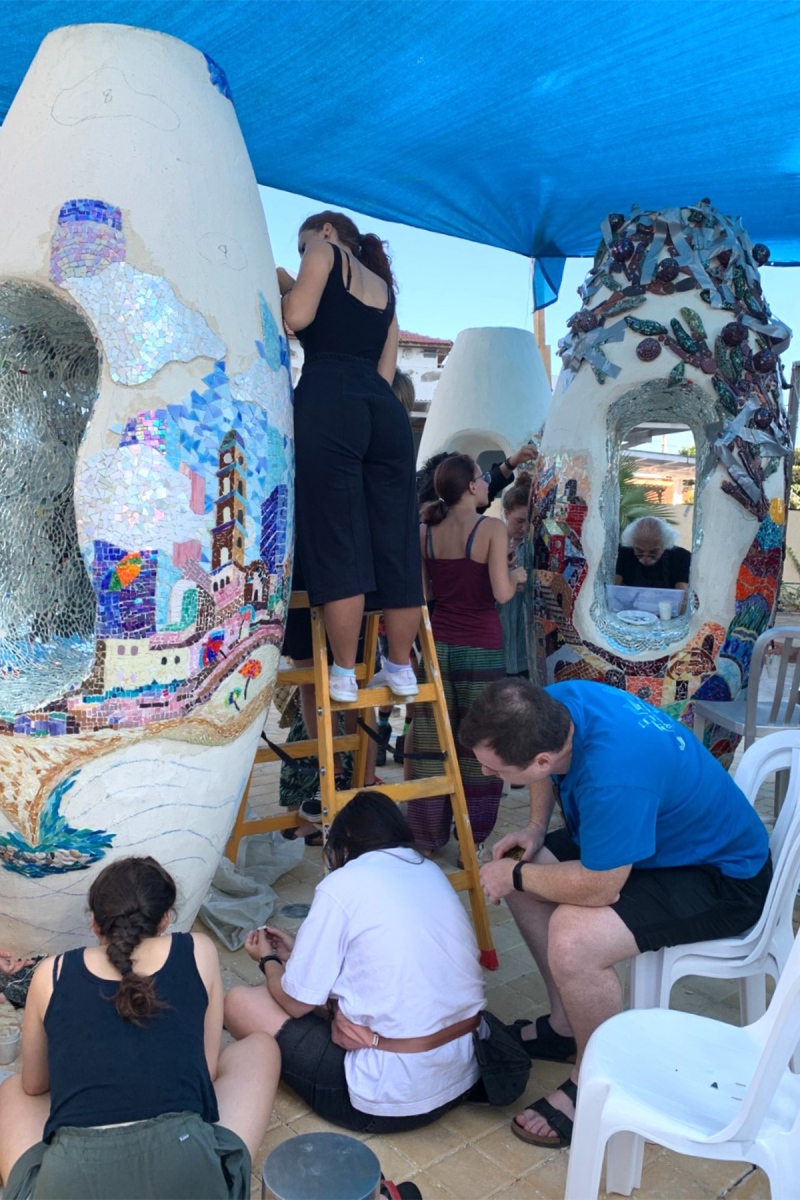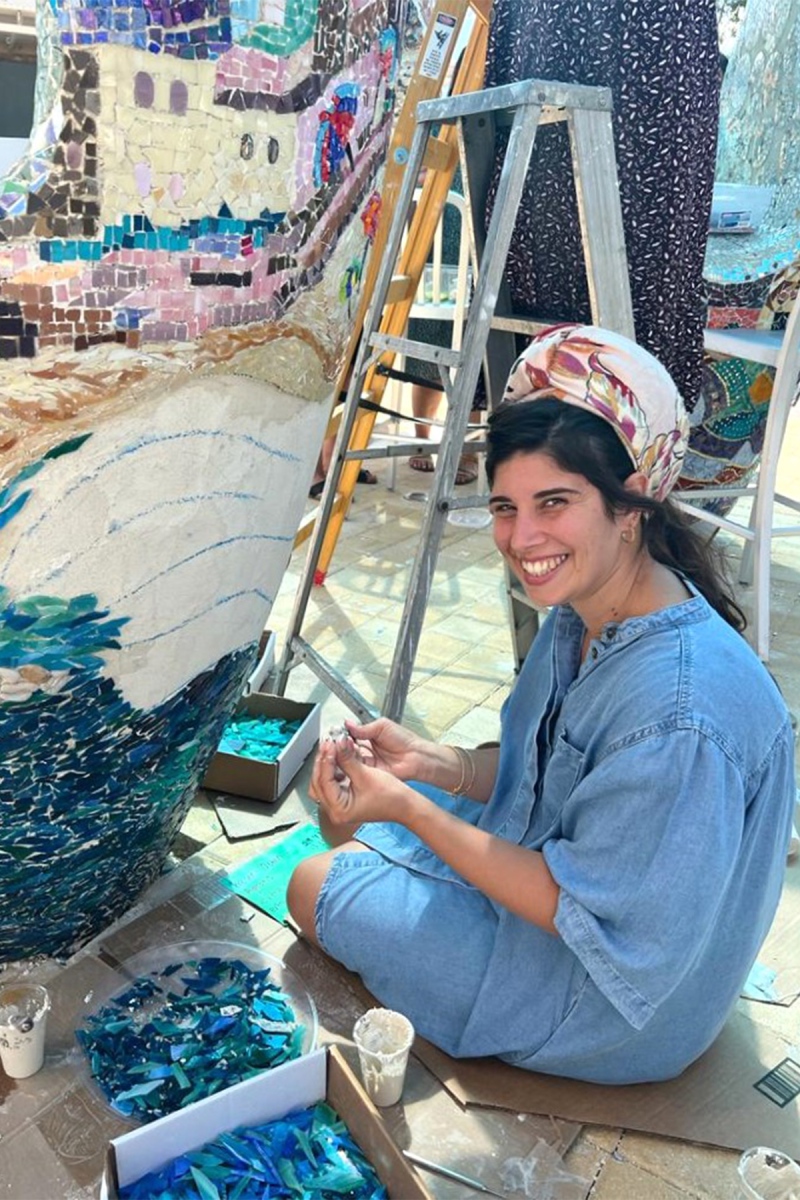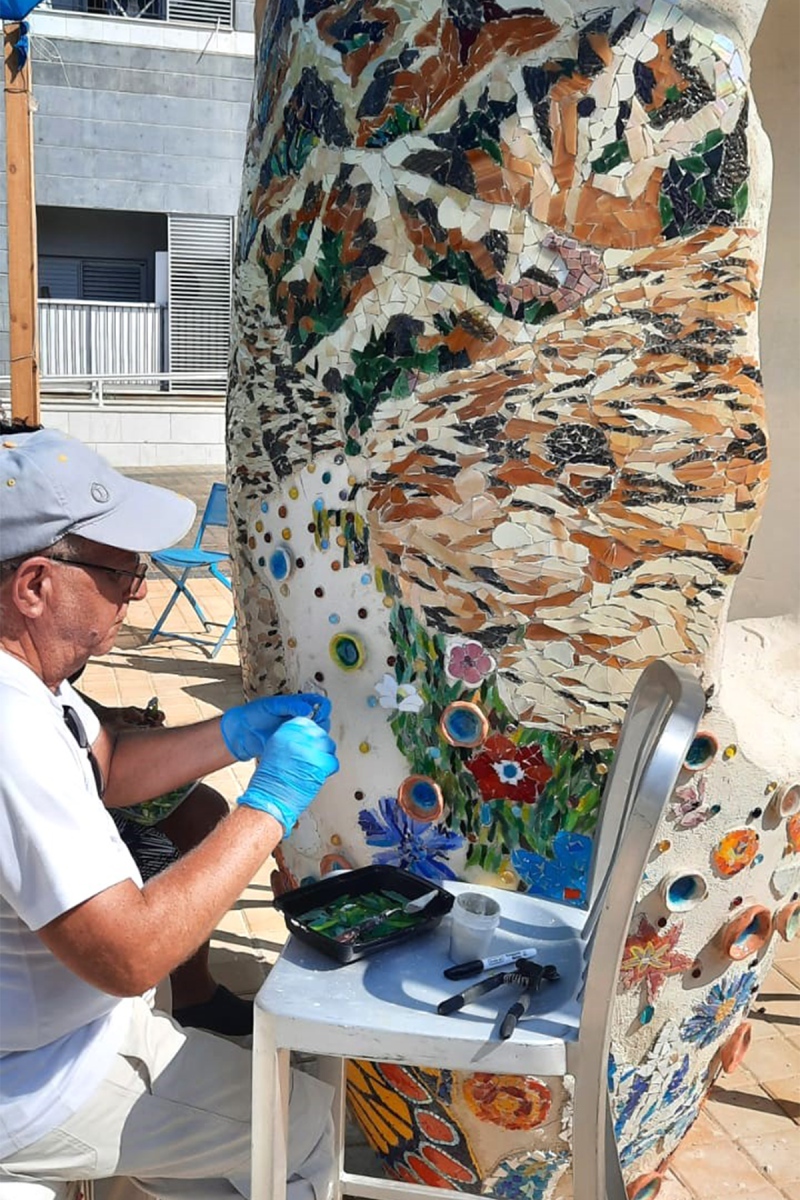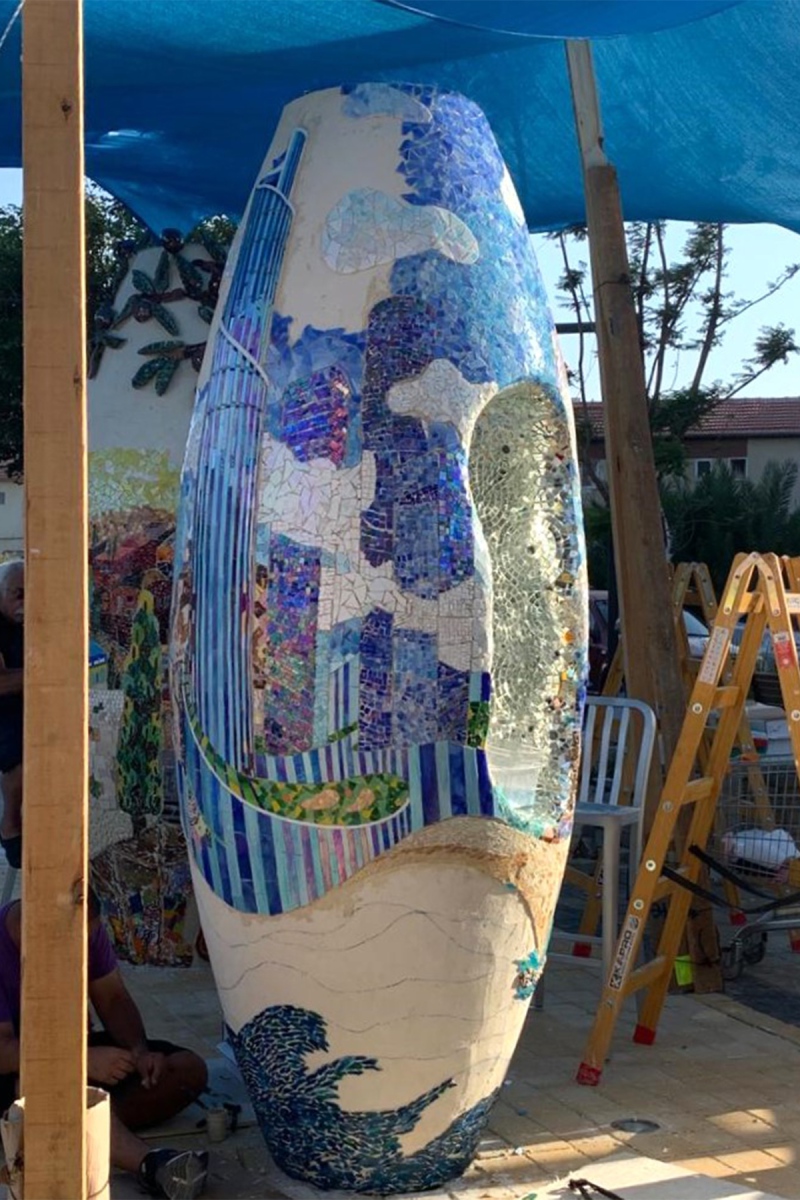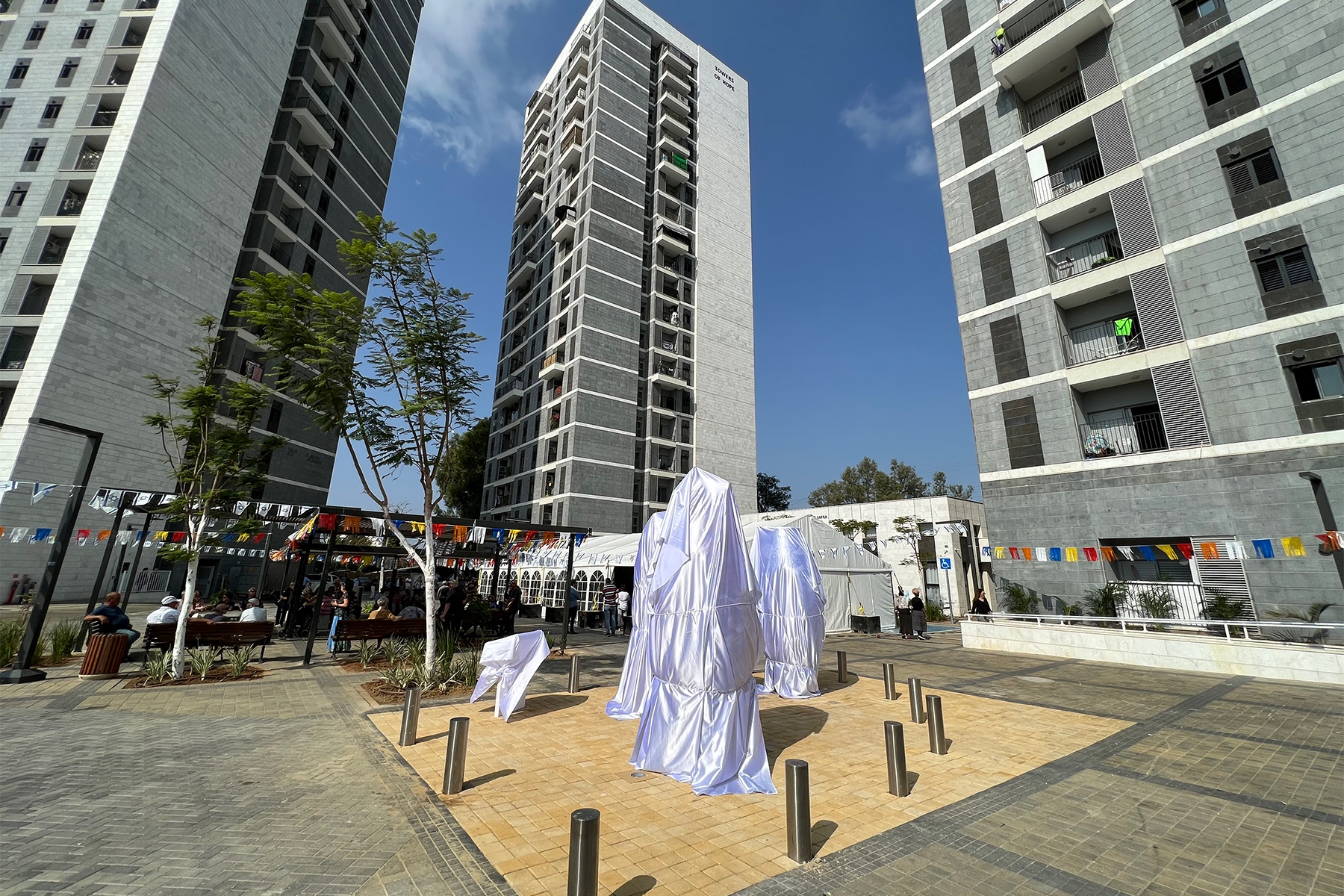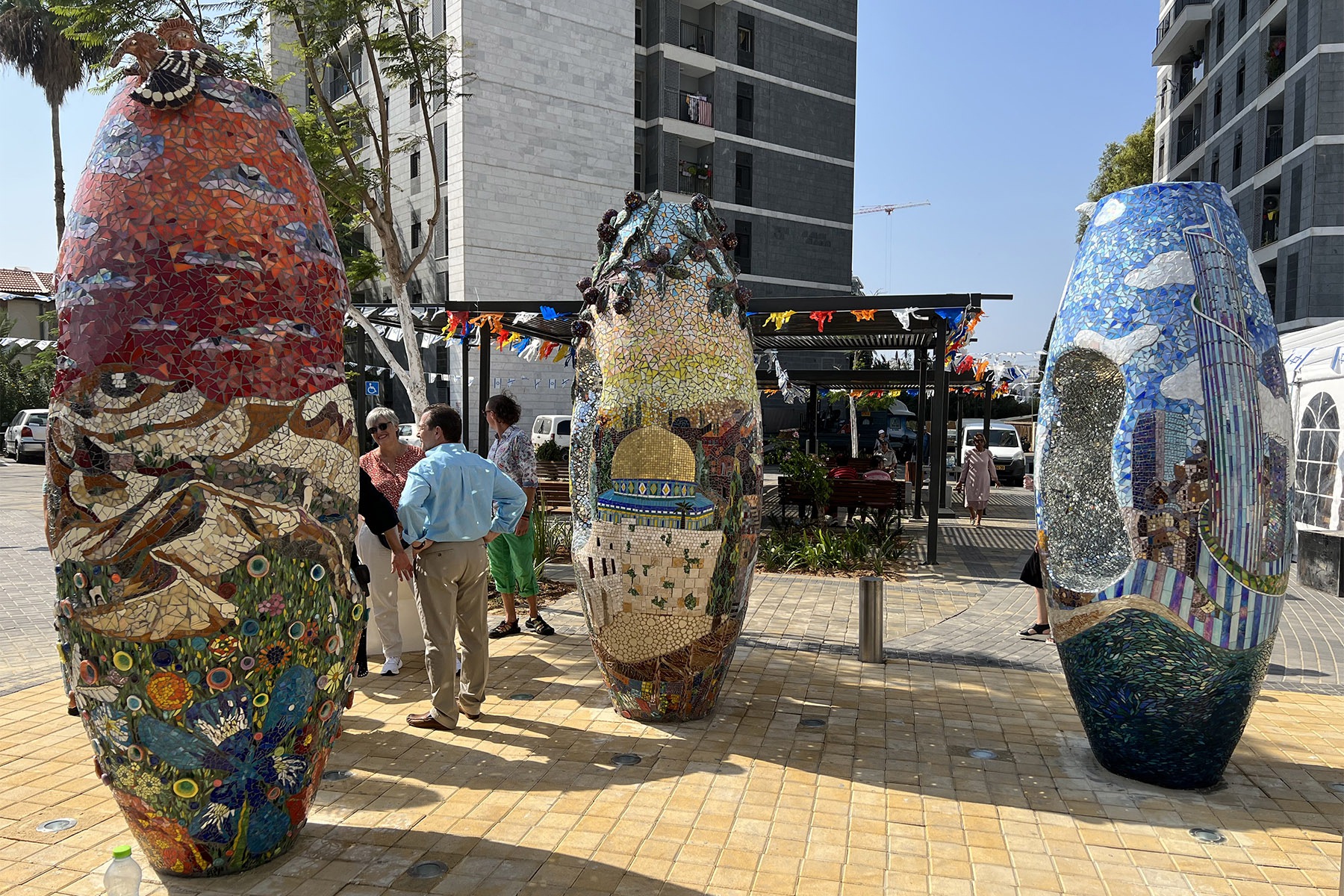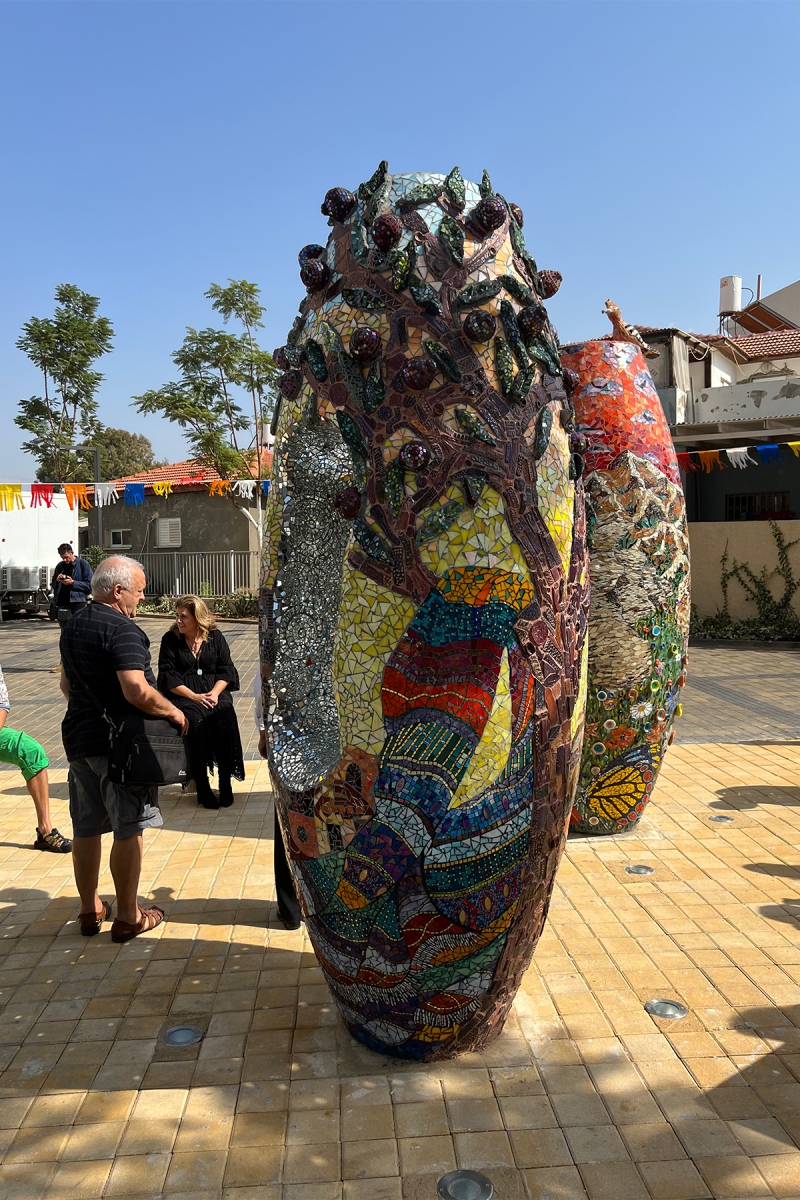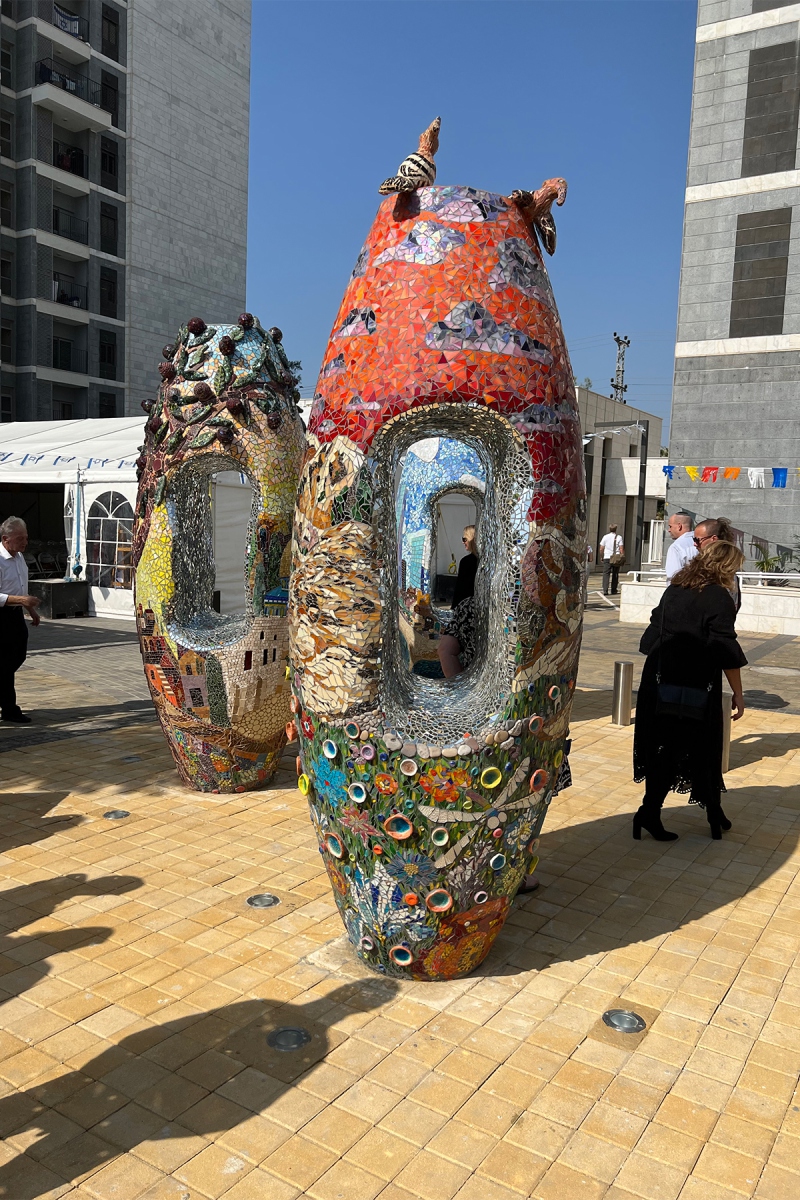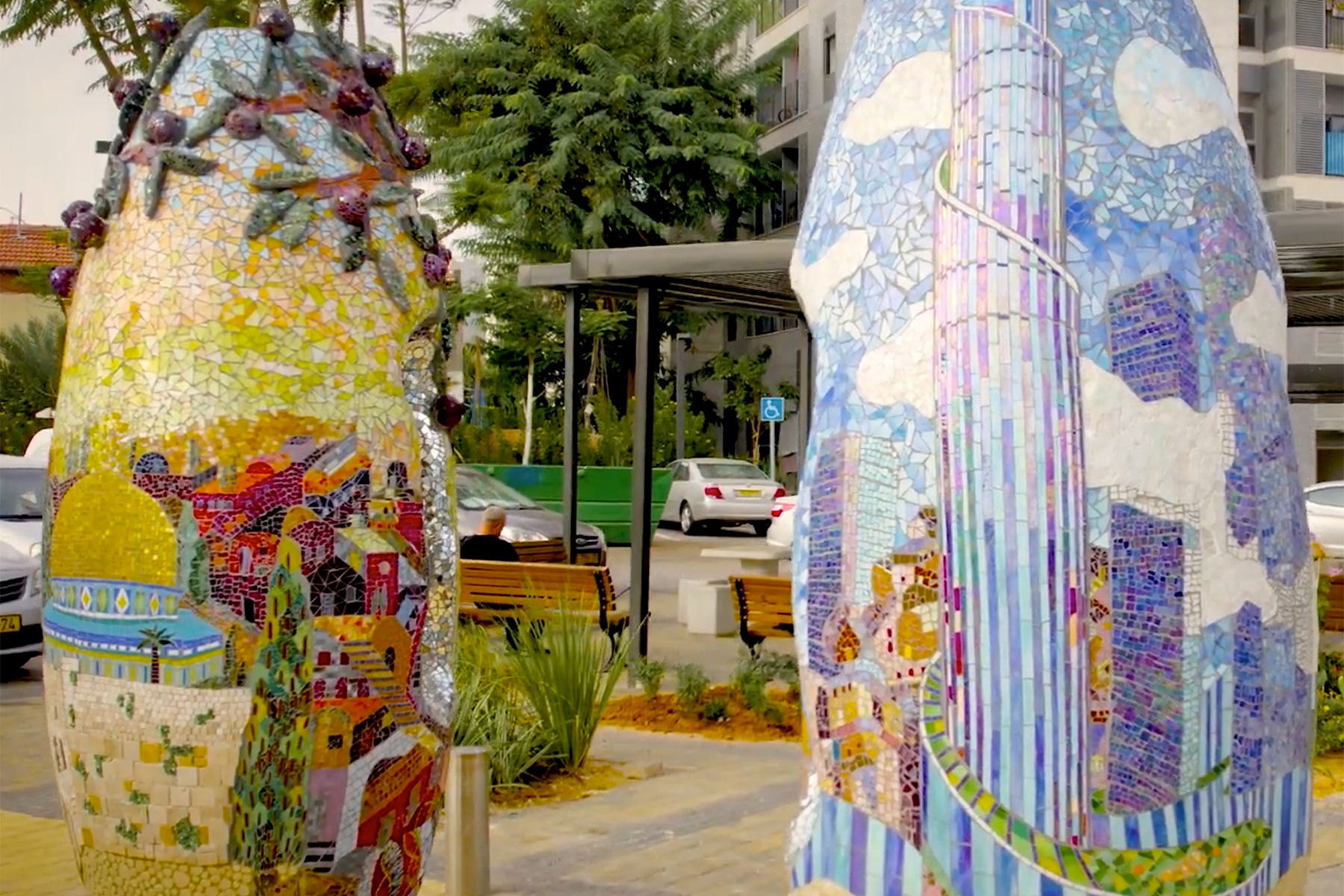
Many hands make light work, and the proof of that is on display in Ashkelon, Israel, where three nine-foot, cylindrical sculptures of mosaic art now stand in the center courtyard of an affordable housing complex built by Weinberg Foundation grantee Amigour.
The new public art project at the Chella and Moise Safra Amigour Home for the Elderly was led by Foundation grantee and Baltimore nonprofit Art with a Heart and designed to involve community members in Baltimore and Ashkelon. It further cements the special relationship between the two places, which have been sister cities for nearly two decades. The sculptures also provided an opportunity for residents of the Safra Center housing complex to take part in shaping what would become permanent fixtures in their daily environment.
“This gave the residents of the complex an unforgettable experience and the possibility of coming to see and enjoy art—but also, for the first time in their lives, be a part of it,” said Erez Shani, CEO of Amigour, which aims to meet the needs of low-income older adults in Israel, largely by constructing affordable housing.
“This project brought together so many different communities that we care about deeply,” said Rachel Garbow Monroe, President and CEO of the Weinberg Foundation. “Community members, volunteers, and nonprofit partners in two countries have all come together to make this happen, and part of the magic of these beautiful sculptures has been the many connections that have come together so successfully to create them.”
Photos courtesy of Art with a Heart
Unveiled in late October, the artwork represents the culmination of a yearlong endeavor involving several other Foundation partners—including the Jewish Agency for Israel; Amigour, one of its subsidiaries; and The Associated: Jewish Federation of Baltimore—as well as more than 1,000 volunteers in the United States and Israel.
The sculptures, whose shape is inspired by the vessels that held the Dead Sea scrolls, each depict Israel’s past, present, and future, respectively—from the iconic landmarks of Jerusalem to Tel Aviv’s modernity to the desert landscape that has given rise to innovations in agriculture and technology.
“There’s so much to take in on all of them. I hope people study them,” said Randi Pupkin, Executive Director of Art with a Heart, a longtime grantee that provides visual arts education and classes for young people and adults. Pupkin hopes Amigour residents feel connected with the many who helped create them, she added. “When we do a project like this, it shows that the people who came and supported it really care about who they’re giving it to. I want the residents to always feel this connection deeply, that we cared.”
In Baltimore, Foundation staff, students, and service groups from local organizations worked on different components that were part of a 750-pound shipment to Israel. In Ashkelon, the Art with a Heart team held workshops with Safra Center residents, many of whom are Holocaust survivors from the former Soviet Union, as well as recent immigrants to Israel. Volunteers of all ages, from Ashkelon and other parts of the country, joined them in crafting the pieces. They spoke a range of languages, from Ethiopian dialects and French to Hebrew, Russian, and Ukrainian.
“Art is the universal language that got us through,” Pupkin said.
“This was made by many hands. There’s no single ownership of this work,” said Ali Mirsky, Art with a Heart’s Director of Community Service and Public Art. “Even the smallest thing could have passed through three or four hands.”
The collaborative aspect of the project was a big draw, said Amira Ahronoviz, CEO of the Jewish Agency for Israel. “This special co-creation will stay as a story to be carried on to future generations,” Ahronoviz said.
The three sculptures also symbolize a “moral commitment to the life standards of the elderly people here in these three towers…to respect and glorify them,” said Doron Almog, the Jewish Agency’s Chairman of the Executive.
That symbolic commitment will also be on display in the Weinberg Foundation’s Baltimore office, where the sculptures’ prototype will live and serve as a reminder of the many hands that came together as a community—across miles, cultures, and generations—to bring an artistic vision to life.
To learn more about the development of this project, please enjoy this video.
